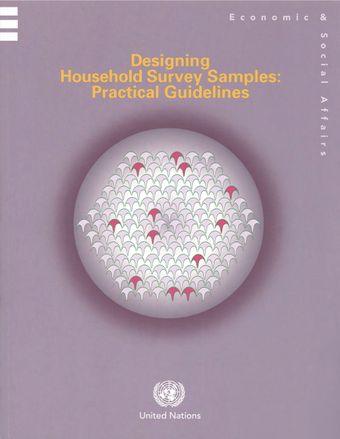Sampling strategies

- Author: United Nations
- Main Title: Designing Household Survey Samples , pp 25-73
- Publication Date: September 2008
- DOI: https://doi.org/10.18356/5191cd3f-en
- Language: English Arabic, French, Russian, Spanish
While chapter 2 on survey planning offered a general overview of the various phases of household survey operations, the present chapter is the first of several that concentrate solely on sampling aspects—the principal focus of the present handbook. This chapter briefly discusses probability versus non-probability sampling and argues why the former should always be used in household surveys. Considerable attention is given to sample size—the many parameters that determine it and how to calculate it. Techniques for achieving sampling efficiency in household surveys are presented. They include stratification, cluster sampling and sampling in stages, with special emphasis on two-stage sample designs (see definitions and descriptions of these concepts in table 3.1 and annex I). Various sampling options are provided and two major sample designs that have been used in many countries are described in detail. The special topics of (a) sampling in two phases to reach “rare” populations and (b) sampling to estimate change or trend are also discussed. The chapter concludes with a summary of recommendations.
© United Nations
ISBN (PDF):
9789210541732
Book DOI:
https://doi.org/10.18356/f7348051-en
Related Subject(s):
Economic and Social Development
Sustainable Development Goals:
-
From This Site
/content/books/9789210541732c004dcterms_title,dcterms_subject,pub_keyword-contentType:Journal -contentType:Contributor -contentType:Concept -contentType:Institution105
/content/books/9789210541732c004
dcterms_title,dcterms_subject,pub_keyword
-contentType:Journal -contentType:Contributor -contentType:Concept -contentType:Institution
10
5

